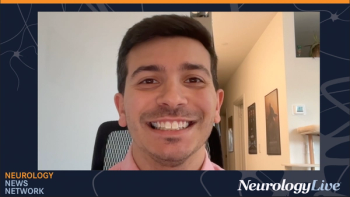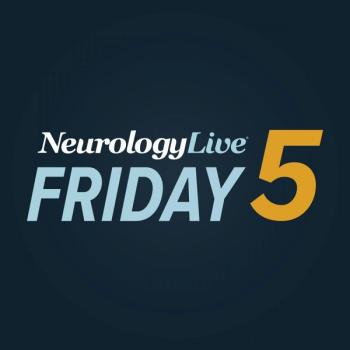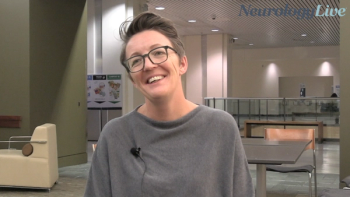
Case Report Suggests Progressive Brain Atrophy May Occur in NMOSD Without Relapse
Key Takeaways
- A 41-year-old NMOSD patient showed progressive frontal lobe atrophy and cognitive decline over nine years, despite limited relapses and treatment.
- Initial symptoms included intractable hiccups, nausea, and cough, progressing to severe neurological deficits requiring intensive care.
A case report reveals cognitive decline and brain atrophy in a patient with NMOSD, highlighting potential subclinical neurodegeneration despite limited relapses.
A recently published case report described a 41-year-old patient with neuromyelitis optica spectrum disorder (NMOSD) who developed progressive frontal lobe atrophy and cognitive decline over 9 years despite limited relapses, raising questions about potential subclinical neurodegeneration in the disease.1
The case report, published in Cureus Journal of Medical Science, followed a man with no past medical history, no family history of neurological or neurodegenerative disorders, who presented with intractable hiccups, nausea, and cough in 2011. Five weeks later, he developed nystagmus, and by 10 weeks he had facial sensory disturbance, dysphagia, respiratory failure, and quadriparesis due to longitudinally extensive transverse myelitis from the medulla to Th1. Ultimately, the patient tested positive for serum aquaporin-4 (AQP4) antibodies and was diagnosed with NMOSD, requiring intubation and mechanical ventilation in the ICU during the acute phase.
Led by senior author Masayuki Nakamori, MD, PhD, Department of Neurology and Clinical Neuroscience, Yamaguchi University School of Medicine, the patient first began on steroid pulse therapy, followed by 12 sessions of plasma exchange, and 2 course of intravenous immunoglobulin therapy. Despite this, the patient still experienced limb weakness, spasticity in the lower limbs, and urinary dysfunction. At the time, the patient’s Expanded Disability Status Scale (EDSS) was 7.5 and oral prednisolone at 15 mg/day was initiated to prevent relapse.
As time went on, the patient experienced 2 relapses in the years to follow, with an EDSS score that remained essentially unchanged since the first initial episode. In 2015, he relapsed with orthostatic hypotension from a new medullary lesion despite ongoing prednisolone, but improved after two courses of high-dose methylprednisolone and seven sessions of plasma exchange.
Several years later, in 2020, the patient was readmitted to the hospital with intractable hiccups while taking prednisolone 12.5 mg/day. The patient presented with relentless hiccups occurring every few seconds, alongside residual deficits from prior attacks, including distal upper-limb weakness, proximal lower-limb weakness, lower-limb spasticity and clonus, hyperreflexia, bilateral Babinski signs, and urinary dysfunction. A new enhancing lesion on the dorsal medulla confirmed an NMOSD relapse. Following two courses of high-dose methylprednisolone and eight plasma-exchange sessions, the intractable hiccups resolved.
Satralizumab (Enspryng; Genentech), an FDA-approved IL-6 inhibitor, was then started as a relapse prevention therapy. On Hasegawa Dementia Scale-Revised, the patient’s score was 29 out of 30, indicating preserved global cognition. Despite this, the patient continued to show additional deficits on more comprehensive testing.
READ MORE:
Follow-up neuropsychological testing showed clear cognitive impairment: on the Wechsler Adult Intelligence Scale, the patient had an overall IQ of 76, with notably low perceptual reasoning and processing speed scores (both 71). Performance on the Wisconsin Card Sorting Test was also abnormal, with only one category completed instead of the typical five to six, consistent with significant executive dysfunction.
"In our case, the initial attack produced a markedly severe and extensive cord lesion,” the study authors wrote.1 "This lesion may have triggered a cascade of dying-back and transneuronal degeneration, extending from the spinal cord to M1 and further to prefrontal regions. This mechanism may have contributed, at least in part, to the progressive cerebral atrophy and cognitive decline observed in our patient."
Prior to illness, the patient functioned well cognitively as a mid-level manager, but he stopped working after disease onset due to physical disability. Although no clear day-to-day cognitive problems emerged in the years that followed, family members and clinicians noticed he was slower and less efficient than before. His course was not influenced by alcohol, benzodiazepines, centrally acting drugs, or other substances associated with cognitive decline, and at the time of testing, neither significant fatigue nor depression appeared to affect his performance.
According to the study authors, this was the first report to demonstrate progressive brain atrophy and cognitive decline in a patient with NMOSD without cerebral relapses. A previously conducted retrospective cohort study found that patients with NMOSD and multiple sclerosis showed similar silent progression of brain atrophy, while another study reported greater white matter atrophy in NMOSD compared with healthy controls, reaching significance only in those with prior NMOSD-related cerebral syndromes.2,3
REFERENCES
1. Fujikawa S, Shimizu F, Honda M, Koga M, Nakamori M. Progressive Cerebral Atrophy and Cognitive Decline Without Cerebral Lesion in Neuromyelitis Optica Spectrum Disorder: A Case Report. Cureus. 2025;17(11): e97003.doi:10.7759/cureus.97003
2. Masuda H, Mori M, Hirano S, et al.: Silent progression of brain atrophy in aquaporin-4 antibody-positive neuromyelitis optica spectrum disorder. J Neurol Neurosurg Psychiatry. 2022, 93:32-40. 10.1136/jnnp-2021-326386
3. Masuda H, Mori M, Hirano S, et al.: Higher longitudinal brain white matter atrophy rate in aquaporin-4 IgG-positive NMOSD compared with healthy controls. Sci Rep. 2023, 13:12631. 10.1038/s41598-023-38893-1
Newsletter
Keep your finger on the pulse of neurology—subscribe to NeurologyLive for expert interviews, new data, and breakthrough treatment updates.



































